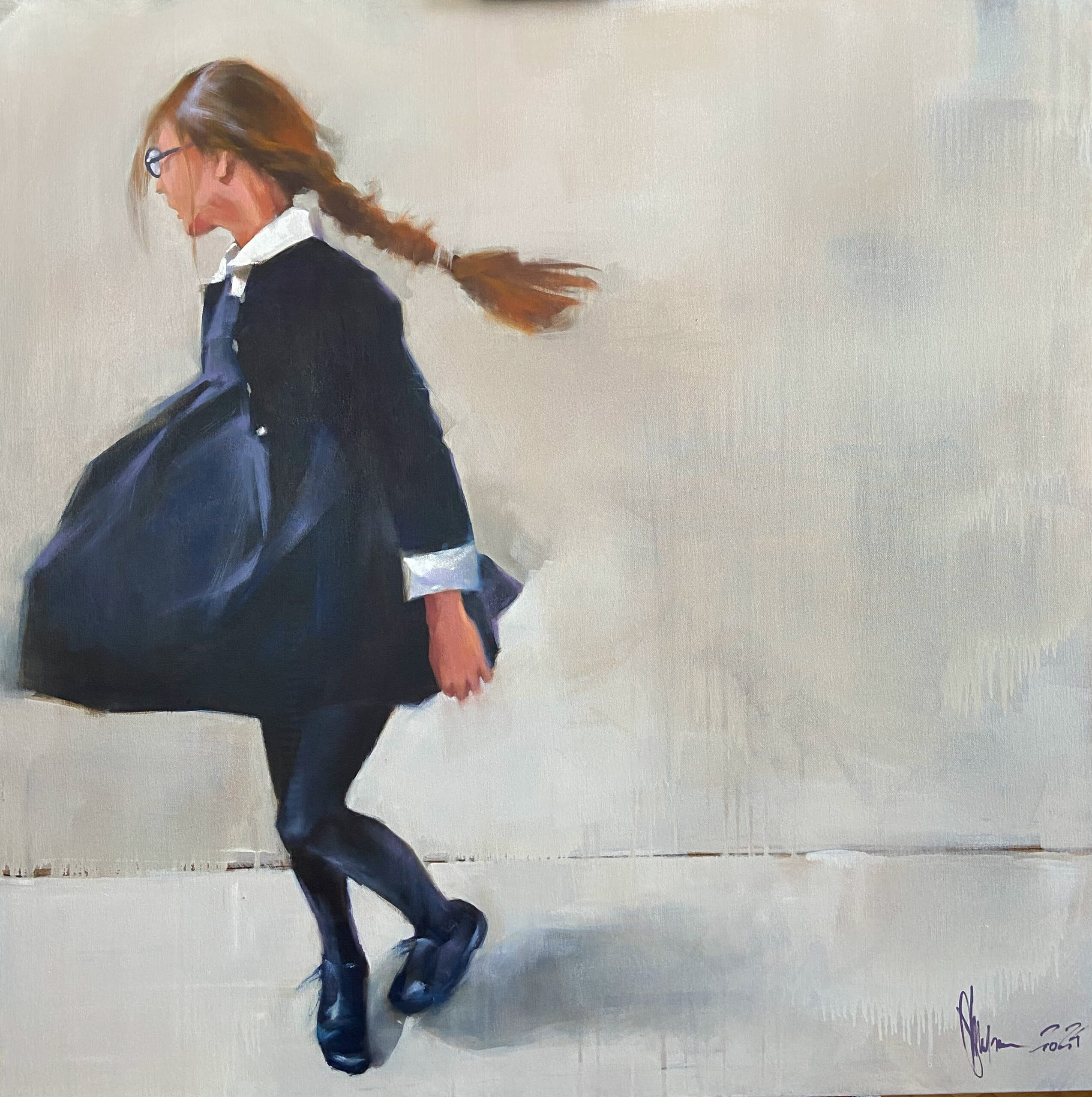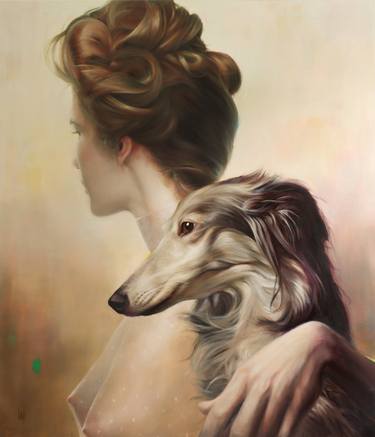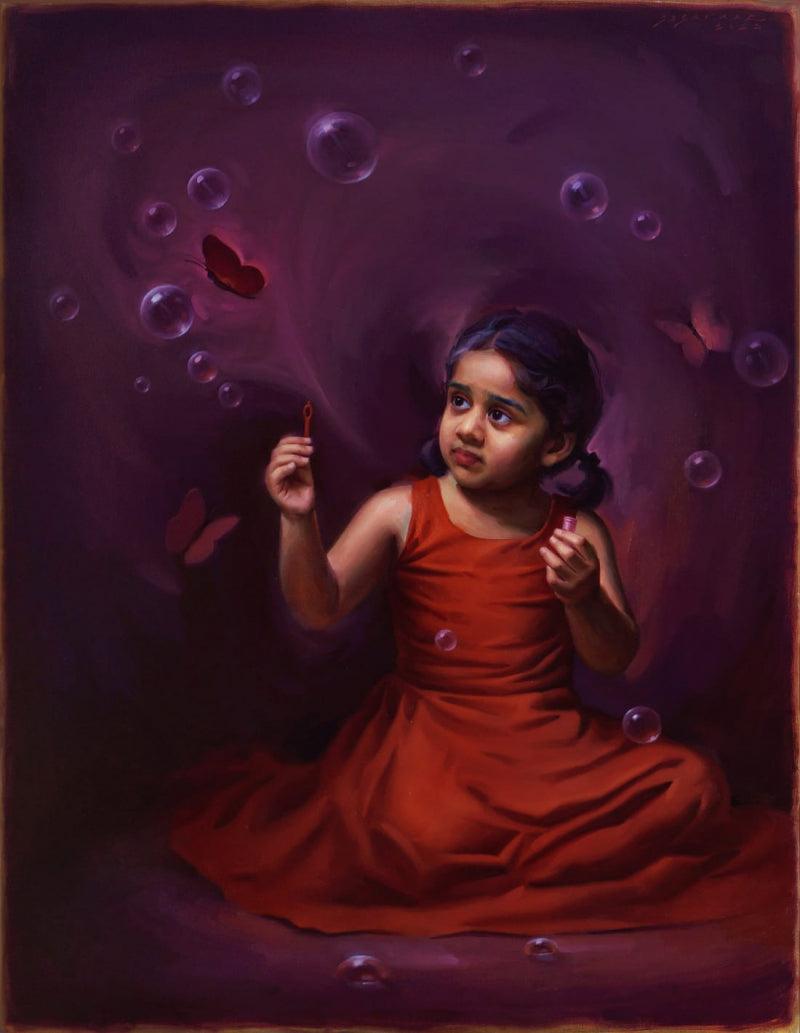The Effect of Figurative Oil Painting on Modern Art and Society
The Effect of Figurative Oil Painting on Modern Art and Society
Blog Article
The Evolution of Figurative Oil Painting: Understanding Its Historic Relevance and Modern Interpretations
The evolution of metaphorical oil paint serves as an engaging lens with which to take a look at the interaction in between creative expression and historic context. Contemporary musicians, drawing from this rich heritage, are currently reinterpreting the human figure in ways that test standard narratives.
Beginnings of Figurative Oil Paint
The origins of metaphorical oil painting can be traced back to the early Renaissance in Europe, especially in the 15th century. The advancement of oil paint permitted for higher deepness of color and information, improving the realistic look and vibrancy of their work.

In this transformative period, figures were often portrayed within contextually abundant environments, showcasing not just their physical features yet also their mental states. Pioneers such as Jan van Eyck and Titian took advantage of the medium's versatility, using layering methods to attain luminance and texture. This technology facilitated the representation of elaborate fabrics and the subtleties of complexion, adding to the growth of portraiture and narrative scenes.
In Addition, the Renaissance emphasis on humanism fostered a gratitude for distinctiveness, which in turn affected artists to create more dynamic and relatable numbers - figurative oil painting. As an outcome, metaphorical oil painting became a powerful car for storytelling and emotional involvement, laying the groundwork for future artistic activities and styles
Secret Historical Movements
Substantial historic movements have formed the development of figurative oil paint, each contributing special ideologies and strategies that broadened the medium's opportunities. The Renaissance marked a turning point, stressing realism and the human type, with musicians like Leonardo da Vinci and Michelangelo pressing the limits of physiological accuracy and point of view. Following this, the Baroque era brought remarkable contrasts of light and shadow, exemplified by Caravaggio, who instilled religious themes with extreme emotionality.
The 19th century presented Romanticism and Realism, where artists such as Delacroix and Courbet tested classical perfects, focusing on private expression and everyday life. The introduction of Impressionism better transformed the tool by highlighting the results of light and color, leading to a separation from standard representation.
In the very early 20th century, movements like Expressionism and Cubism redefined figurative paint via abstraction and the expedition of psychological depth. Each of these motions not just showed the social changes of their times yet also prepared for contemporary analyses. The interplay in between these historic movements has actually developed an abundant tapestry of philosophies and designs, affecting contemporary artists in their pursuit of capturing the human experience on canvas.
Strategies and Materials Development

Throughout the Baroque duration, techniques such as chiaroscuro and sfumato arised, boosting the emotional vibration of figurative compositions. Artists started to experiment with lusters and impasto, manipulating texture and luminance. By the 19th century, advancements like using pre-mixed paints in tubes transformed accessibility, permitting musicians to repaint en plein air and capture the fleeting effects of light.
The 20th century observed the intro of artificial pigments and tools, which broadened the palette and modified the uniformity of oil paints. Moreover, the exploration of brand-new application strategies, such as scheme knives and brushes of varying rigidity, further diversified artistic expression. Collectively, these improvements reflect the advancing partnership in between products, strategies, and the imaginative vision intrinsic in figurative oil paint.

Contemporary Interpretations
Contemporary analyses of figurative oil painting reflect a vibrant discussion in between practice and development, where artists challenge established norms and discover diverse themes. This advancement manifests in various ways, as modern artists blend classic strategies with modern ideas, frequently attending to social, political, and individual narratives.
Numerous practitioners draw motivation from historical works, yet they instill their pieces with contemporary perspectives, using the human kind as a vehicle for discourse on culture, sex, and identification. Artists increasingly explore abstraction, distortion, and multimedias, which permits for a wider analysis of the number and its context.
Additionally, using brilliant color schemes and unconventional compositions often serves to disrupt conventional watching experiences, provoking crucial interaction from target markets. This shift in emphasis extends beyond aesthetic appeals; it mirrors an expanding recognition of the intricacies of human experience in an interconnected globe.
As metaphorical oil paint remains to develop, it remains a crucial tool for checking out the nuances of contemporary life, symbolizing both a respect for heritage and a dedication to modern thought. The result is an abundant tapestry of expression that reverberates with the complexities of the modern-day human condition.
Influence On Modern Art
The impact of metaphorical oil paint on modern art is extensive, as it has actually continuously other influenced a myriad of creative motions and methods throughout the 20th and 21st centuries. From Expressionism to Surrealism and past, the expedition of the human figure has remained a central motif, enabling artists to convey complicated feelings and narratives. This focus on figurative depiction has actually led to a re-examination of traditional methods, resulting in innovative methods that blend realism with abstraction.
Moreover, contemporary artists have embraced figurative oil painting as a method to resolve social and political problems, utilizing the medium to test perceptions of identity, society, and gender. The rebirth of rate of interest in figurative operate in current years shows a yearning for connection in a significantly electronic globe, where human experience and feeling are paramount.
Furthermore, the discussion in between official source metaphorical oil paint and contemporary art appears in the works of artists such as Kehinde Wiley and Jenny Saville, that draw on historical recommendations while infusing their items with modern significance. Eventually, figurative oil painting proceeds to shape and redefine modern imaginative expression, highlighting its long-lasting significance in the art world.
Verdict
The development of metaphorical oil paint emphasizes its historical value and versatility across different artistic motions. Inevitably, metaphorical oil painting remains an important tool for exploring the human experience, resonating profoundly in today's digital landscape.
The development of metaphorical oil painting serves as a compelling lens through which to take a look at the interaction between artistic expression and historical context.Significant historic motions have actually formed the development of metaphorical oil paint, each adding one-of-a-kind ideologies and strategies that expanded the medium's possibilities.As historical motions shaped the trajectory of metaphorical oil painting, the strategies and materials used by musicians have additionally undertaken substantial improvements. figurative oil painting.The effect of figurative oil painting on contemporary art is profound, as it has read here constantly influenced a myriad of creative motions and practices throughout the 20th and 21st centuries.The development of metaphorical oil painting underscores its historic importance and adaptability throughout various artistic motions
Report this page